Product Designer
50+ Product Designer Interview Questions and Answers

Asked in HCLTech

Q. If you designed the PowerPoint feature where the top bar can be unpinned, and your manager says it takes up too much space and hides the main content, what would you do?
To address space concerns in PowerPoint, I would explore design alternatives to enhance usability without compromising content visibility.
Conduct user testing to gather feedback on the unpinned top bar's impact on workflow.
Consider implementing a collapsible or auto-hide feature for the top bar to maximize screen space.
Explore alternative layouts that prioritize content visibility, such as a side navigation panel.
Analyze usage data to determine how often users interact with t...read more

Asked in Deloitte

Q. What are other things you do apart from designing?
Apart from designing, I enjoy photography, cooking, and playing musical instruments.
Photography
Cooking
Playing musical instruments
Product Designer Interview Questions and Answers for Freshers

Asked in Zoho

Q. What is your icon design process for web applications and mobile apps?
My icon design process involves researching the target audience, creating sketches, refining designs digitally, and testing for usability.
Research target audience and understand their preferences
Create initial sketches of icons based on research findings
Refine designs digitally using design software
Test icons for usability and make necessary adjustments
Ensure consistency in icon style and size across web and mobile platforms

Asked in SN Digitech

Q. What methodologies do you use to evaluate product usability?
I use a combination of qualitative and quantitative methods to evaluate product usability.
Conduct user testing with real users to gather feedback
Analyze user behavior through analytics tools
Use heuristic evaluation to identify potential usability issues
Conduct surveys to gather user opinions
Consider accessibility guidelines to ensure inclusivity

Asked in Atlassian

Q. What is your approach to managing opposing directions from different leads?
I prioritize clear communication, seek common ground, and involve all stakeholders in decision-making.
Open communication with all leads to understand their perspectives
Identify common goals and areas of agreement
Involve all stakeholders in decision-making process
Seek compromise or alternative solutions when necessary

Asked in Deloitte

Q. What do you like more, UX or UI?
I enjoy both UX and UI, as they are both essential components of creating a successful product.
I appreciate the importance of UX in creating a seamless and intuitive user experience.
I also value the role of UI in creating visually appealing and engaging interfaces.
Both UX and UI are crucial in designing products that meet user needs and expectations.
For example, in a mobile app, UX focuses on navigation and usability, while UI focuses on colors and typography.
Product Designer Jobs


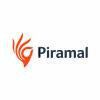
Asked in La Net Team Software Solutions

Q. Can you describe a time when you had to make a design decision with limited data?
Faced with limited user feedback, I prioritized usability and aesthetics to enhance a mobile app's onboarding experience.
Conducted a heuristic evaluation to identify usability issues.
Utilized existing design patterns to guide decisions, ensuring familiarity.
Created low-fidelity prototypes to gather quick feedback from stakeholders.
Focused on core user tasks to streamline the onboarding process.
Asked in La Net Team Software Solutions

Q. How do you approach user research and incorporate feedback into your design?
I prioritize user research to inform my designs, ensuring they meet user needs and preferences through iterative feedback.
Conduct user interviews to gather qualitative insights about user needs and pain points.
Utilize surveys to collect quantitative data on user preferences and behaviors.
Create personas based on research findings to guide design decisions.
Incorporate usability testing sessions to observe real users interacting with prototypes.
Iterate on designs based on feedb...read more
Share interview questions and help millions of jobseekers 🌟

Asked in La Net Team Software Solutions

Q. How do you balance user needs with business goals in your design?
Balancing user needs with business goals involves understanding both perspectives and finding a design solution that satisfies both.
User Research: Conduct user interviews and surveys to gather insights on user needs, ensuring that designs are user-centered. For example, using feedback from usability tests to refine a product feature.
Stakeholder Collaboration: Regularly engage with business stakeholders to understand their goals and constraints, aligning design decisions with ...read more

Asked in Wednesday Solutions

Q. What is your typical design process when starting a new product or feature?
My design process involves research, ideation, prototyping, testing, and iteration to create user-centered products.
Research: Conduct user interviews and surveys to understand needs. For example, interviewing patients for a health app.
Ideation: Brainstorm ideas and sketch concepts. Use techniques like mind mapping or design sprints.
Prototyping: Create low-fidelity wireframes and high-fidelity prototypes using tools like Figma or Sketch.
User Testing: Gather feedback through us...read more
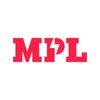
Asked in Mobile Premier League

Q. Tell me something about the Design language of MPL.
MPL's design language focuses on simplicity, consistency, and user-centricity.
Simplicity in design elements and interactions
Consistency in visual style and user experience across all platforms
User-centricity by prioritizing user needs and feedback
Use of vibrant colors and playful illustrations for a modern look

Asked in Elite Elevators

Q. What is your experience with SolidWorks as a design tool?
I have extensive experience using SolidWorks for 3D modeling and product design across various industries.
Proficient in creating detailed 3D models and assemblies for complex mechanical components.
Utilized SolidWorks for simulations to test product durability and performance, such as stress analysis on a housing unit.
Experience in generating technical drawings and documentation for manufacturing processes.
Collaborated with cross-functional teams to iterate designs based on fe...read more
Asked in Tacnik Technology

Q. What are the stages of the product development life cycle?
The product development life cycle consists of stages that guide a product from conception to market launch and beyond.
Idea Generation: Brainstorming sessions to generate innovative product ideas, such as a new app or gadget.
Market Research: Analyzing market trends and customer needs to validate the product idea, like surveys or focus groups.
Concept Development: Creating detailed product concepts and prototypes to visualize the idea, such as wireframes for a software applicat...read more

Asked in SN Digitech

Q. What are your product design process and methods?
My product design process involves research, ideation, prototyping, testing, and iteration.
Conduct user research to understand needs and pain points
Brainstorm and ideate potential solutions
Create prototypes to test and gather feedback
Iterate based on feedback and continue testing
Collaborate with cross-functional teams throughout the process

Asked in Dhoot Group

Q. Introduce yourself what are the specifications in your stream what challenges will be face in robotics
I am a Product Designer with expertise in robotics. I have experience in designing user-friendly interfaces and optimizing product functionality.
Specifications in my stream include knowledge of CAD software, prototyping tools, user experience design principles, and material selection.
Challenges in robotics may include ensuring seamless integration of hardware and software components, optimizing performance in various environments, and addressing ethical considerations.
For exa...read more

Asked in TripFactory

Q. How do you prioritize tasks when facing a deadline?
Effective task prioritization under deadlines involves assessing urgency, impact, and available resources to ensure timely delivery.
Assess Urgency: Identify tasks that are time-sensitive. For example, if a design needs to be presented to stakeholders tomorrow, prioritize that over less urgent tasks.
Evaluate Impact: Focus on tasks that will have the most significant impact on the project. For instance, completing a core feature that affects user experience should take preceden...read more
Asked in Metadrob

Q. Do you know how to create templates for data presentation?
Yes, I know how to create templates for data presentation.
Identify the key data points to be included in the presentation
Design a layout that is visually appealing and easy to understand
Use tools like Microsoft Excel, Google Sheets, or Adobe InDesign to create the template
Include charts, graphs, and tables to visualize the data
Ensure consistency in formatting and branding throughout the template
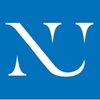
Asked in Numero Uno Clothing

Q. What is your design process?
My design process involves research, ideation, prototyping, testing, and iteration to create user-centered solutions.
Research: Gather information about user needs, market trends, and competitors.
Ideation: Brainstorm and generate ideas for potential solutions.
Prototyping: Create low-fidelity and high-fidelity prototypes to visualize concepts.
Testing: Conduct user testing to gather feedback and iterate on designs.
Iteration: Refine designs based on feedback and continue testing ...read more

Asked in Homes247

Q. What is your design process from idea to execution?
My design process involves research, ideation, prototyping, testing, and iteration to create user-centered solutions.
Research: Conduct user interviews and surveys to understand needs. For example, interviewing patients to improve a health app.
Ideation: Brainstorm ideas using techniques like mind mapping or sketching. For instance, sketching multiple layouts for a new feature.
Prototyping: Create low-fidelity wireframes and high-fidelity prototypes using tools like Figma or Ske...read more

Asked in Shri Ram Finance Corporation

Q. Can you walk me through your design process?
My design process involves research, ideation, prototyping, testing, and iteration to create user-centered products.
Research: I start by understanding user needs through interviews and surveys. For example, I conducted user interviews for a health app to identify pain points.
Ideation: I brainstorm ideas and sketch initial concepts. In a recent project, I used mind mapping to explore features for a travel booking app.
Prototyping: I create low-fidelity wireframes to visualize t...read more
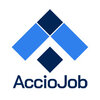
Asked in AccioJob

Q. What was your approach to the Acciojob redesign?
The Acciojob redesign focused on enhancing user experience through intuitive navigation and modern aesthetics.
Conducted user research to identify pain points, such as confusing navigation and cluttered interfaces.
Developed wireframes and prototypes to visualize new layouts, emphasizing a clean and modern design.
Implemented user testing sessions to gather feedback on the redesign, iterating based on user insights.
Incorporated accessibility features to ensure the platform is us...read more

Asked in Wednesday Solutions

Q. How do you handle user feedback in design work?
I prioritize user feedback by actively listening, analyzing data, and iterating designs to enhance user experience.
Conduct user interviews to gather qualitative feedback, like understanding pain points in a healthcare app.
Utilize surveys to collect quantitative data, such as user satisfaction ratings after a product launch.
Implement A/B testing to compare design variations and see which resonates better with users.
Create user personas based on feedback to ensure designs meet ...read more
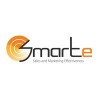
Asked in SMARTe

Q. What are the UX design considerations for plain water bottles?
Plane water bottles can enhance user experience by providing convenience, portability, and hydration on the go.
Convenient for carrying and drinking water while traveling or on the move
Portable design allows for easy transportation in bags or backpacks
Encourages hydration throughout the day, promoting better health and well-being

Asked in Watchyourhealth.com

Q. How do you balance user needs with business goals?
Balancing user needs with business goals involves understanding both perspectives and finding a harmonious solution that benefits all.
Conduct user research to identify pain points and needs, ensuring the design addresses real user problems.
Align user needs with business objectives by identifying common goals, such as improving user retention while enhancing user experience.
Use metrics to measure success, like tracking user engagement and conversion rates to ensure both user s...read more

Asked in SkilloVilla

Q. Explain the typical design process behind a small feature.
A typical design process for a small feature involves research, ideation, prototyping, testing, and iteration.
1. Research: Understand user needs through surveys or interviews. Example: Conducting user interviews to identify pain points.
2. Ideation: Brainstorm potential solutions and sketch ideas. Example: Using mind maps to explore different design concepts.
3. Prototyping: Create low-fidelity wireframes or high-fidelity prototypes. Example: Using tools like Figma or Sketch to...read more

Asked in Phenom

Q. Explain the design process using one of the projects in your portfolio.
Redesigning a mobile app for a seamless user experience
Conducted user research to identify pain points and user needs
Created wireframes and prototypes to visualize design concepts
Iterated on designs based on user feedback and usability testing
Collaborated with developers to ensure design feasibility
Final design focused on intuitive navigation and clean aesthetics

Asked in KredX

Q. How is UX design different from Product Design?
UX design focuses on user experience, while product design encompasses the entire product development process.
UX design is more focused on the overall user experience and usability of a product
Product design involves the entire process of creating a product, including research, ideation, prototyping, and testing
UX designers work closely with users to understand their needs and behaviors, while product designers collaborate with cross-functional teams to bring a product to mar...read more

Asked in SN Digitech

Q. What is the difference between Product Design and UX Design?
Product design focuses on creating physical products while UX design focuses on creating digital experiences.
Product design involves designing physical products such as furniture, appliances, and vehicles.
UX design involves designing digital experiences such as websites, apps, and software.
Product design considers factors such as materials, manufacturing processes, and ergonomics.
UX design considers factors such as user research, user interface design, and user testing.
Produc...read more
Asked in High Spirit Commercial Ventures

Q. What is important in the design process?
Understanding user needs, research, iteration, collaboration, prototyping, usability testing.
User research to understand needs and preferences
Iterative design process for continuous improvement
Collaboration with stakeholders for diverse perspectives
Prototyping to visualize and test ideas
Usability testing to gather feedback and make informed decisions

Asked in Elite Elevators

Q. What can you tell me about sheet metal?
Sheet metal is a flat piece of metal, typically less than 6mm thick, used in various applications like manufacturing and construction.
Common materials include aluminum, steel, and copper.
Used in automotive manufacturing for body panels and frames.
Essential in HVAC systems for ductwork and ventilation.
Sheet metal can be easily cut, bent, and shaped for various designs.
Applications in electronics for enclosures and heat sinks.
Interview Questions of Similar Designations
Interview Experiences of Popular Companies




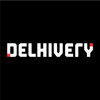

Calculate your in-hand salary
Confused about how your in-hand salary is calculated? Enter your annual salary (CTC) and get your in-hand salary


Reviews
Interviews
Salaries
Users










